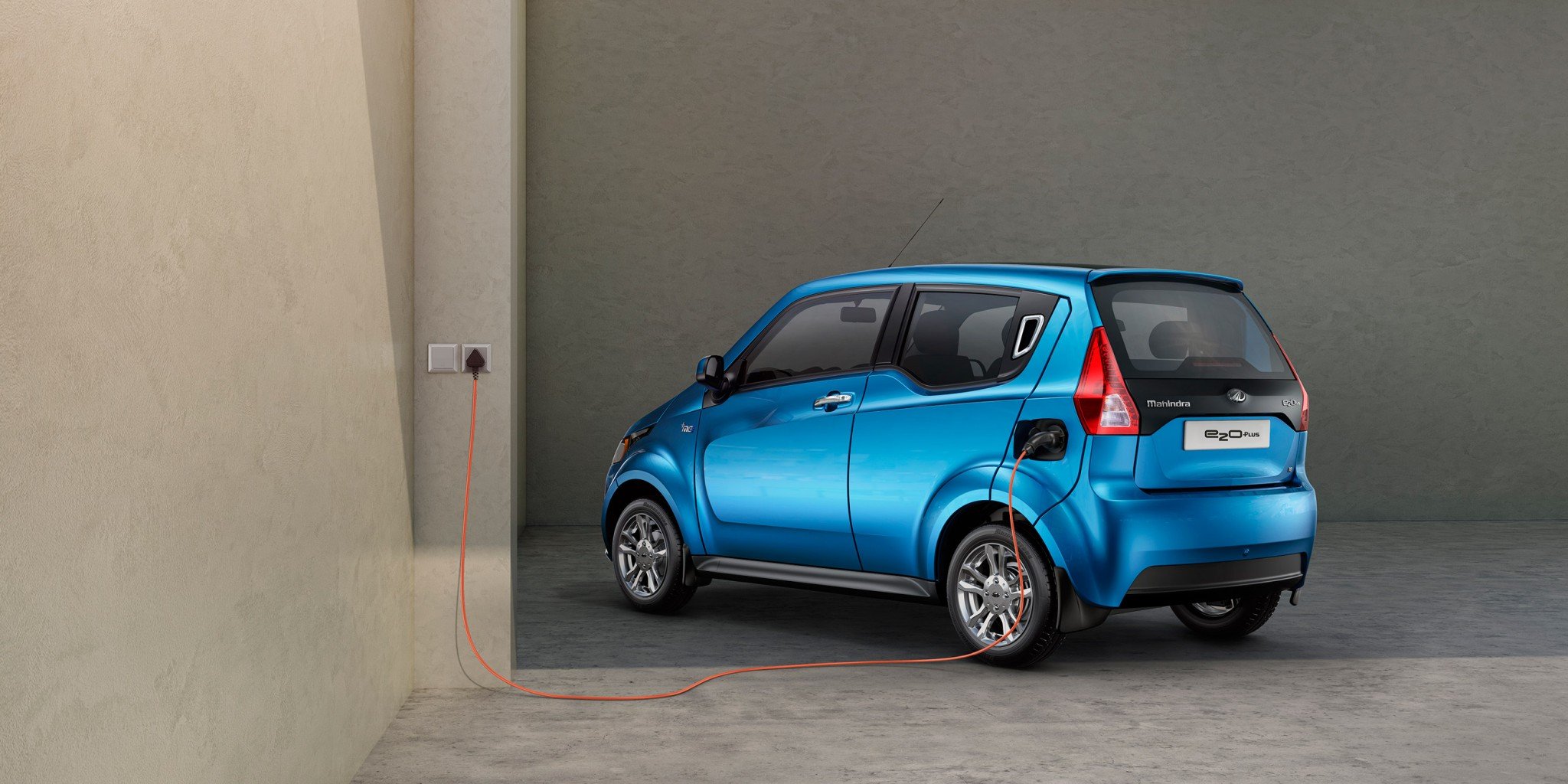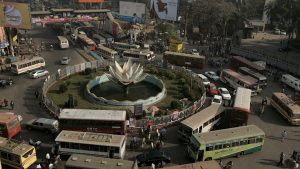Since coming to power the Indian Prime Minister, Narendra Modi, has announced one green energy initiative after the other. One by one, however, these have turned out to be red herrings that have succeeded only in drawing attention away from technologies that can deliver the required non-fossil fuel energy.
His first commitment, to set up 100,000 MW of solar power generating capacity by 2022 has got off to a slow start. 2,133 MW of generating capacity was added in 2015, and a little under 4,000 MW in 2016. Around 10,000 MW is now under construction and will come on stream by the end of next year. That will still leave another 84,000 MW to be constructed in the next four years. The task is not impossible, so the government has raised its solar power target to 250,000 MW by 2030 but the impact these will have on carbon emissions is debatable.
The first two large plants have an ‘availability’ of only 19-20%, in other words they can only be run for about 1,700 hours a year, or less than five hours a day. Thus even 250,000 MW of power installed in photovoltaic plants will generate no more electricity than 60,000 MW generated by conventional power plants today. They will thus meet only 10% of the additional power the country will need by 2030. Solar photovoltaic power could therefore turn out to be a red herring when it comes to reducing GHG emissions and mitigating climate change. But it is being chased not only by India but by most countries of the world, because it is cheap, takes very little time to set up, and is therefore virtually risk free.
Leapfrogging to an electric vehicles future
But the Indian government is about to chase another, even larger, red herring. In a 90-page report prepared with the Rocky Mountain Institute (RMI) titled “Transformative Mobility Solutions for India”. The outcome of a multi stakeholder workshop in February, led by India’s Planning Commission (renamed Niti Aayog in 2014) and RMI, which included key industry leaders, the report urges the government to make a radical transformation towards a transportation system geared completely around electric vehicles.
The report proposes a 15 year plan for making the shift which will begin by limiting the registration of conventional vehicles through public lotteries, and complement that with a preferential registration for electric vehicles, similar to policies followed in China. To kick-start the shift, the report suggests an initial bulk procurement of electric vehicles, building standardized, swappable batteries for two- and three-wheelers to bring down their cost and having favourable tariff structures for charging cars.
Where will the electricity come from?
The idea is futuristic and may get accepted because it will fit in with Modi’s flamboyant style of decision-making. RMI and Niti Aayog have sweetened the pill by claiming it will reduce annual GHG emissions by one billion tonnes. A few moments reflection, however, reveals its gaping flaws. The number of privately owned motorised vehicles rose from 29 million in 2002 to 160 million in 2013. This figure will almost certainly rise again, to over 500 million, by 2030. This immediately raises the question, “Where will the electricity they consume come from?”
A few hundred thousand electric cars spread all over the country can have their batteries charged from sockets in their garages, or at charging stations installed at petrol pumps, without unduly increasing the load on the existing power stations. So this will genuinely help to lower emissions. But when 350 million vehicles have to be charged every day, at any time of the day or night, anywhere in the country, not only will an entire nation-wide, and therefore expensive, recharging infrastructure have to be built, but the power these vehicles will consume will have to be generated first. Given the limited capacity of solar PV power to meet this demand and the miniscule contribution of nuclear power in India’s energy mix, nearly all of this will have to come from coal.
That is when the second law of thermodynamics will come into play. Even with supercritical temperatures and pressures of steam to drive the generators, the conversion efficiency of heat into electricity is no higher than 42%. There will be further losses in converting AC into DC current and in overcoming the inertia of moving parts as electrical energy is turned into mechanical energy to drive the vehicle. All in all, therefore, at least three times as much fossil fuel energy will have to be consumed as the energy saved by switching from oil and gas to electric cars. Most of it will come from coal, which generates far more greenhouse gases per unit of usable energy than petrol, diesel or CNG.
A giant shift in infrastructure
Then there is the giant shift that will have to be made in the country’s energy infrastructure. In 13 short years, a nationwide network of charging stations will have to be built, that is capable of recharging car and lorry batteries within a few minutes. Simultaneously an intricate transport fuel distribution and storage system will become redundant, causing substantial losses to the distributors. Add to this the losses that India’s highly developed auto components companies will have to endure, and the outcome is obvious. Since India is no longer a closed economy and no other country is contemplating such radical auto surgery many, if not most, of them will shift their factories to Thailand.
The number of charging stations that will have to be created is mind boggling. In 2014 there were 51,780 petrol pumps. Another 35,600 were projected to be added by the end of this year. At the current rate of growth this figure is likely to treble to 250,000 by 2030, and the majority will have to be in small towns and along highways, where there is no reliable power supply today. If these stations are also to meet the demand of charging electric vehicles, during power cuts and low voltage periods the owners will have to set up generators. These will run on diesel, contributing still more greenhouse gasses.
What price will consumers pay?
Finally there is the question of price. The Mahindra group is selling the e20, a design bought from Chetan Maini, the pioneer manufacturer of electric vehicles in India, for INR 700,000 (USD 10,850). Toyota is planning to sell its model 3 in the US for USD 35,000 (INR 2,200,000) just marginally less than the price of a Mercedes. This price could come down sharply if the bulk of the components are manufactured in India. But Tesla has postponed its entry into India because the infrastructure for even the stipulated 30% manufacture of its components does not exist in the country.
The report seems to be aware of these problems. That is why it has tried to sweeten the pill by pointing to the fact that in addition to lowering carbon emissions by one billion tonnes a year, the shift will also save USD 60 billion in foreign exchange due to less oil having to be imported. This inducement only works if electric vehicles are a real alternative to conventional vehicles in India. As Tesla’s decision to bypass India shows, this is not currently the case. There is, though, an alternative fuel which could make this a reality: methanol.
The advantages of methanol
Methanol has all the qualities of ethanol, but without the limitation of supply that ethanol faces because of having to be produced from food crops. It is a clean burning, very high flame speed fuel that was the prescribed fuel in all major automobile races in the world from 1965 till 2008, when it was joined by ethanol. Best of all, while ethanol has so far only been produced in large quantities from food crops, methanol can be produced from any biomass, from municipal solid waste to every manner of crop residue.
The technology that can convert biomass waste into transport fuels is gasification, also called destructive distillation. This is the burning of biomass in a limited supply of oxygen to produce mainly carbon monoxide and hydrogen, instead of carbon dioxide. The two gases can be combined using a 92- year old industrial process called the Fischer-Tropsch synthesis, into any transport fuel one desires. It has been in use in South Africa to produce synthetic transport fuels from coal for more than half a century, and has now been adapted by several research institutions to do the same with any kind of biomass.
Since transport fuels made from biomass emit the same amount of carbon dioxide when consumed as the biomass absorbed from the air, it is completely carbon-neutral. It too will save pretty nearly all of the foreign exchange that India spends on imported crude oil. Finally, since the crop residues – leaves, stalks and roots – will be as valuable as the crop itself, it will double farm incomes across the entire country – one of the aims of the Prime Minister. Not only are the synthetic fuels produced by this route less costly than those obtained by refining crude oil, so long as the price of crude oil remains around, or above USD 60 a barrel, switching to them requires no change either in the design of automobile engines or the energy infrastructure of a country. The social cost of switching to biomass-based fuels is zero.
Unfortunately in chasing the gleaming chimera of the electric car transformation the global market economy is chasing yet another red herring while the technologies that could actually help avert catastrophic climate change are being ignored.
When contacted by thethirdpole.net, Clay Stranger from RMI responded to queries about where the electricity would come from, about power cuts in rural areas, the lack of components manufacturing in India, and the impact on jobs. He said the report, “was premised on India meeting its NDC requirements of 175 gigawatts of renewables by 2022. We then linearly extrapolated from 2022 to 2030.” While the report had not looked at power cuts and charging the use of swappable electric batteries was seen as a solution, and, “with USD 330 billion of cumulative fuel savings between now and 2030 on the table, India can deploy these savings towards infrastructure investments to overcome challenges”. He suggested that Tesla’s choice of retreating from the Indian market was not final, and “under the government’s emerging plan, all components will be made in India, with the exception of battery cells. The cells will eventually be made in India within 3-5 years.” Lastly, on the jobs front, he said that, “we see the focus on Make In India as a job protector, and we see mobility services as a major ongoing source of employment. Additionally, the government is considering using the STD-PCO model for distributed charging, meaning that almost anyone could set up a charging station and earn a small income from it.”
Unfortunately India has a weak past performance on similar initiatives. Vehicle component manufacture in India – whether through the Maruti initiative or for the Indian Army – have repeatedly overshot time and budgets – and that despite the much hyped Make in India initiative, job creation has steadily declined in the last three years of the present government. – eds








